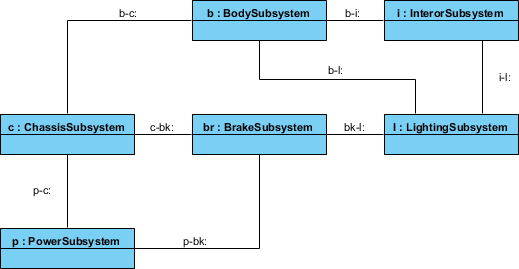Block definition diagrams, internal block diagrams, and package diagrams are types of structure diagrams. Parametric diagrams are a type of internal block diagram; therefore, a parametric diagram is transitively a type of structure diagram. The internal block diagram (IBD) is used to specify the internal structure of a single block. More precisely, an IBD shows the connections between the internal parts of a block and the interfaces between them.
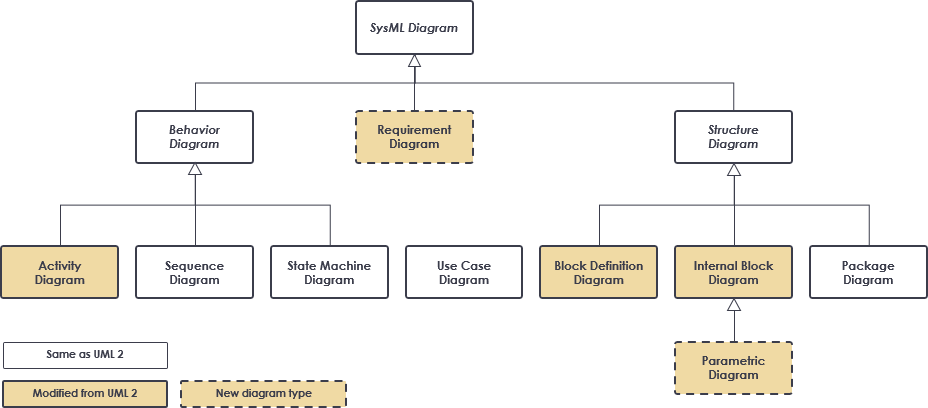
Block Definition Diagram vs Internal Block Diagram
The SysML internal block diagram uses to model the decomposition of a block or its internal structure such as parts and subsystems; in contrast, a Block Definition Diagram (bdd or BDD) shows Blocks, their contents, and relationships.
The blocks on the block definition diagram are further elaborated by identifying the ports on the blocks and their definitions so that the ports can be connected in the internal block diagram.
Blocks, Parts, and Ports
The Internal Block Diagram in SysML captures the internal structure of a block in terms of properties and connectors between properties.
- A Block is the equivalent of the class in UML. The block instance is a “Part”. The block is the basic structural element in SysML it is used to represent:
- A system
- A physical component
- A software component
- Data, data structures
- Procedures
- Transmission means
- People
- Ports are a special class of property used to specify allowable types of interactions between blocks
- Constraints are a special class of property used to constrain other properties of blocks. Property can represent a role or usage in the context of its enclosing block. Property has a type that supplies its definition.
- Parts are belonging to a block. An IBD conveys an important aspect of a system’s structure: the specific parts that will exist in a built system and the connections among those parts. for example, maybe typed by another block. An IBD has the unique ability to convey the services that specific parts provide to one another and the types of matter, energy, and data that can flow among them across their connections.
- Reference represents a structure that’s external to the block named in the IBD header— a structure that the block needs for some purpose, either to invoke behaviors or to exchange matter, energy, or data. The notation for a reference property on an IBD is a rectangle with a dashed border.
- Connector between two structures will have some way to access each other within a correctly assembled and operational system.
- Item Flow represents a type of matter, energy, or data that flows between two structures within a system. The notation for an item flow on an IBD is a filled-in triangular arrowhead on a connector that joins two flow ports
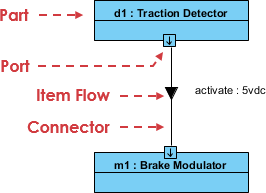
Showing System Context with Internal Block Diagram
The Internal Block diagram below shows the system context in the internal block diagram. We have to introduce a context element that encompasses the system and all actors. Then the question is, in what block are we, internally? This element is denoted with the stereotype «systemContext». You can see in IBD how this context element is modeled; note that this diagram does not necessarily show all actors.
Now, we can establish the Context of the Hybrid SUV System using a User-Defined Context Diagram by the stereotyped Internal Block Diagram:
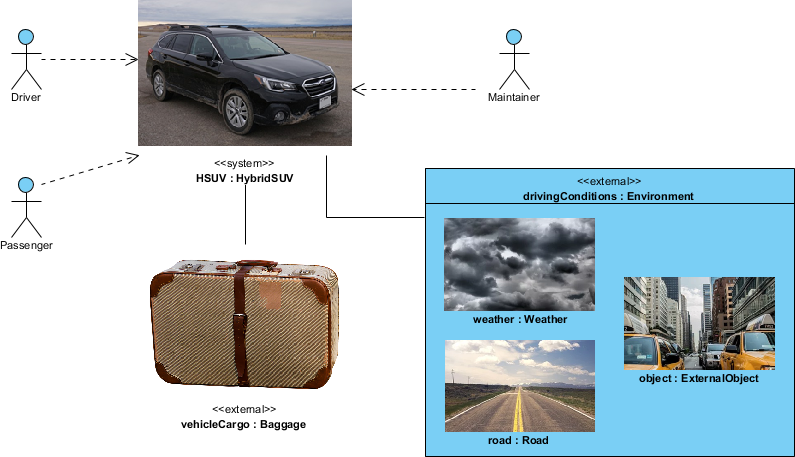
Extending Diagram with UML Stereotype Mechanism
We can make use of a user-defined usage (by using some UML stereotypes) of an internal block diagram (often called system context diagram) to depict some of the top-level entities in the overall enterprise and their relationships. The entities are conceptual during the initial phase of development but will be refined as part of the development process for using the use case diagram and block definition diagram. The relationships in this diagram are also reflected in the Automotive Domain Model Block Definition Diagram will be shown in the later section.
This user-defined IBD usage enables the modeler or methodologist to specify a unique usage of a SysML diagram type using the extension mechanism by defining the following:
- The «system» and «external» stereotypes are user-defined, not specified in SysML, but help the modeler to identify the system of interest relative to its environment.
- Each model element depicted may include a graphical icon to help convey its intended meaning.
- The spatial relationship of the entities on the diagram sometimes conveys understanding as well, although this is not specifically captured in the semantics.
- Also, a background such as a map can be included to provide additional context.
- The associations among the classes may represent abstract conceptual relationships among the entities, which would be refined in subsequent diagrams.
Refining Blocks using Internal Block Definition Diagrams
Block Definition Diagrams can be used in conjunction with Internal Block Diagrams to define system structures as trees of modular components, such as a System-of-Systems decomposition in a System Context diagram.
- A Block Definition Diagram (BDD) specifies a Block as a black-box representation whose white-box Part realization (implementation) is defined via an Internal Block Diagram (IBD).
- In this manner, BDD and IBD diagrams complement each other and facilitate recursive design techniques.
- Blocks define their Parts, where each Part can have a different usage or role in the context of the Block that encapsulates it.
The high-level block definition diagram shown below defines the concepts previously shown in the context diagram example above.
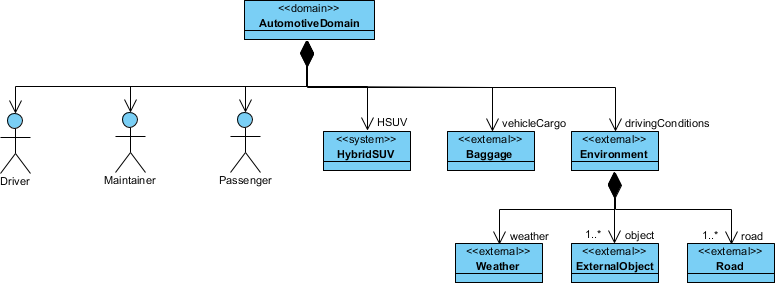
As mentioned before, we can drill down a block by giving the more detailed component structure of it. The Internal block diagram below shows how the model elements are connected in the HybridSUV block:
